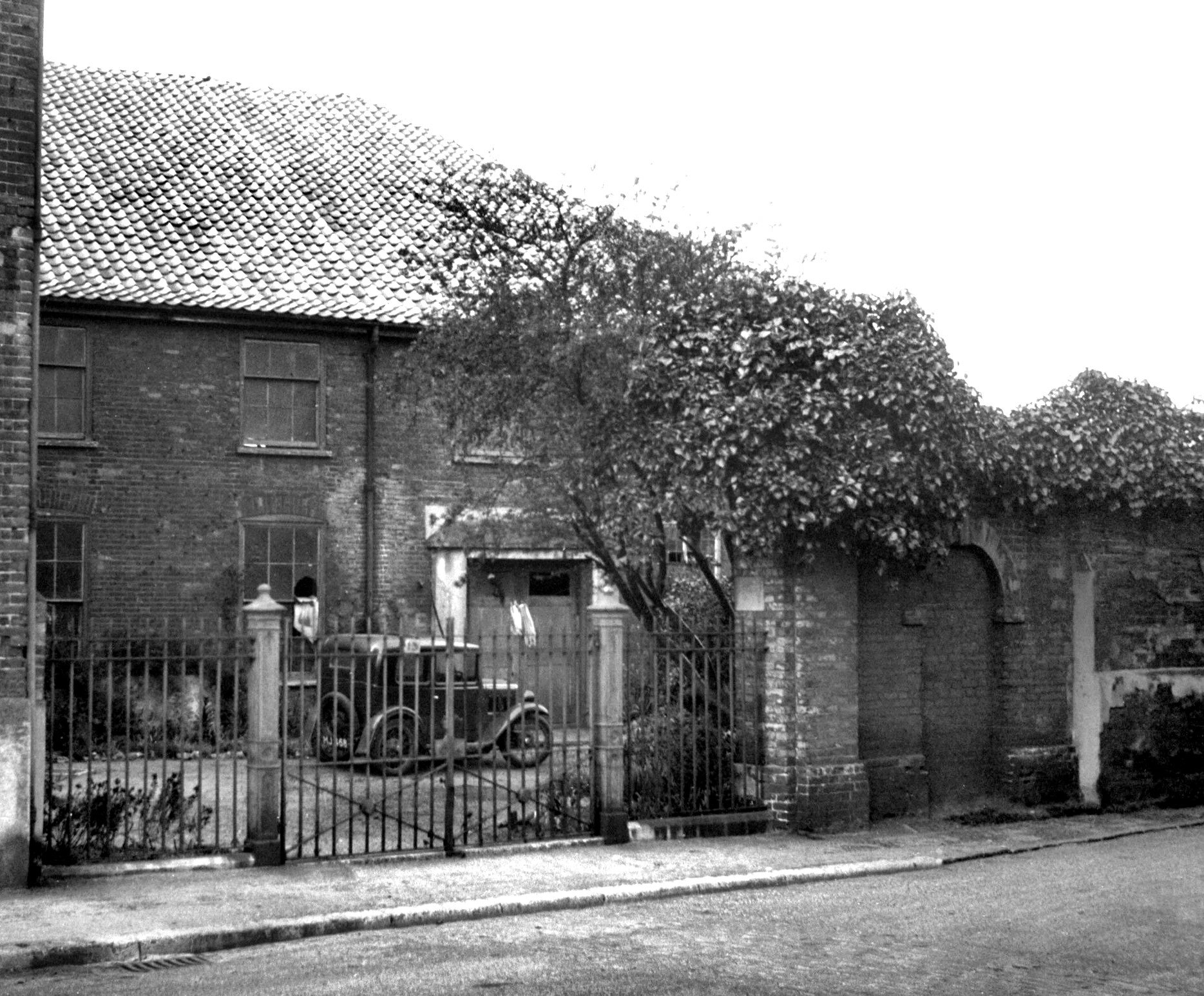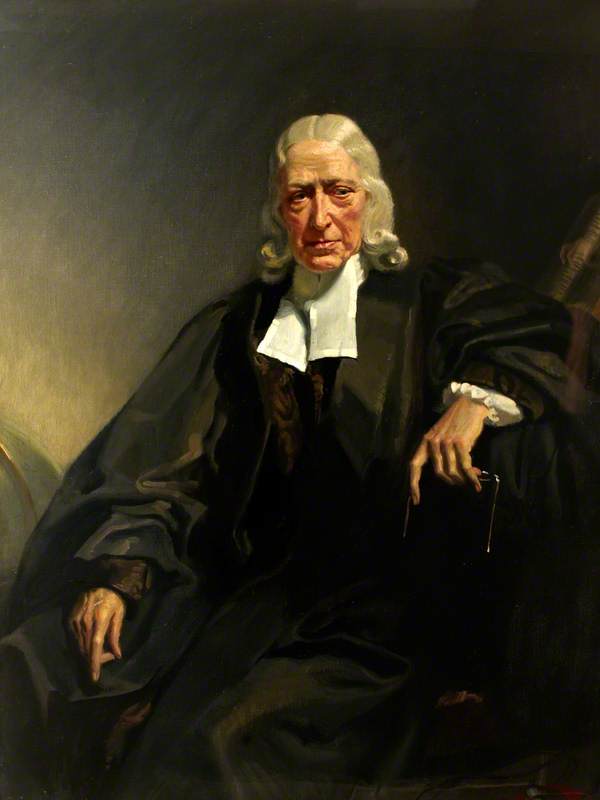The Baptist Tabernacle Chapel
Baptist Tabernacle Chapel
This former Calvinistic Methodist chapel was established in
1754 by James Wheatley and is one of the oldest Methodist chapels in Norfolk.
It has given Forncett End the byway known as Tabernacle Lane, which formerly
was referred to as 'Holl Way'.
James Wheatley had been one of John Wesley's helpers, but when accusations arose about his sexual impropriety with various women in Bradford-upon-Avon, the Wesley brothers had expelled him from the fledging Methodist movement. Wheatley then came to Norwich and commenced open-air preaching in Tombland, with dramatic results. It is said that crowds of more than a thousand would flock to hear him and today his preaching is commemorated by a plaque on the wall at the bottom of Prince's Street.

However, Wheatley's ministry quickly stirred up opposition from various quarters. Local clergy considered him to be an illiterate babbler, and the local tavern owners claimed that trade was adversely affected by the apparent reformation in morals that initially resulted. The young dandies of the local Hell Fire Club, which met in the nearby Bell Hotel, took great delight in gathering bands of ruffians, filling them up with strong drink and setting them to harass the preacher and his followers. For many weeks during 1751 there was daily rioting on the city streets and again in the spring and summer of 1752, with Wheatley being beaten insensible on more than one occasion. This period of extreme social unrest lasted for about nine months.
In spite of this Wheatley persisted and many people still showed a willingness to meet together. So, Wheatley had a wooden tabernacle erected in Orford Place but this building was soon demolished by repeated violent attacks of the mob. Wheatley then collected money to build a permanent preaching place and his fund was swelled by a substantial donation from the Countess of Huntingdon. The Norwich architect Thomas Ivory, who was later to design the Octagon Chapel and the Assembly Rooms, designed a chapel and house for the preacher, on St Martin-at-Palace Plain near the Adam and Eve public house, and the buildings were soon constructed (they were demolished in 1953).

The Tabernacle in Bishopgate, 1935 (George Plunkett collection)
The congregation increased quickly in the city and Wheatley then resolved to build chapels or tabernacles in two villages in south Norfolk; at Hempnall and Forncett End. However, before long, rumors again circulated about Wheatley's inappropriate relationship with women. He was brought before the Bishop's Court, found guilty and left Norfolk, never to return. Before he left, he urged John Wesley to take over the supervision of his congregations. Wesley was initially very reluctant, but eventually agreed. The Forncett chapel was leased to John Wesley in 1758 at the time that he was riding through East Anglia and the following year he visited the chapel.

In his Journal entry for April 1759 Wesley wrote:
Sunday 25th March. - I rode to Forncett, twelve miles from Norwich, where also was a building of James Wheatley's, which without my desire, he had included in the lease. We found William Cudworth had preached there in the morning. It was exceeding good for my sense of honour to come just after him. The people looked as direful upon me, as if it had been Satan in person. However, they flocked from all parts, so that the Tabernacle would not near contain them. I preached about two: God bare witness to his truth, and many were cut to the heart. After preaching I found Mr. Cudworth sitting in the pulpit behind me, whom I quietly and silently passed by. About six I preached at the Tabernacle in Norwich……..
William Cudworth was a collaborator of Wheatley's and he held very different theological views from Wesley. Cudworth and Wheatley believed that the fate of people was fixed by God before they were born, whereas Wesley believed that people could choose freely to accept Jesus and if they did so and followed his teachings, then they would be saved.
Wesley's description of the day evokes a remarkable scene for this rural backwater with an enormous crowd gathered to hear both men speak. Wesley clearly had the task of converting them from the views of the local man but his later diary entries suggest that he succeeded. On Wednesday 28th March, he wrote,
'I rode over to Forncett again and preached to a large congregation. Great parts of them were now exceedingly softened; but some were still bitter as wormwood'.[1]
Back in Norfolk the following year, John Wesley again visited the congregation at Forncett. On Friday 4th January 1760, he 'preached at about one at Forncett to a much milder people than I left there'.[2]
In 1765, with thankfulness, Wesley relinquished the leases on Wheatley's chapels and they were taken over by the Countess of Huntingdon. Subsequently, when her cause declined after her death, in 1791, the building and congregation at Forncett joined the General Baptists who formed a church of the New Connexion in 1814. The building adjacent to the chapel is a rebuild of the original 'School Room' belonging to the church and used then for Sunday School or preparation of candidates for baptism. It is now in private ownership.

Postcard showing the Basptist Chapel and the adjacent School Room
Between 1825 and 1854 the Baptist minister was Joseph King and the 1839 tithe map of Forncett records that he lived in a cottage adjacent to the school room. This cottage is not on the 1813 map and so appears to have been built between 1813 and 1839. After Joseph King's death, in December 1854, he was succeeded by George Maddeys, born in Haddiscoe, Suffolk in about 1796.
In 1875, George Maddeys reached the age of 80 and, as he had also been their pastor for twenty years, the congregation wished to mark the occasion. The chapel building was originally constructed of clay lump, which unless well-tended will deteriorate. So, Maddeys persuaded the congregation that a suitable testimonial would be to have the chapel encased in brick. Funds were quickly raised over the following four months and the work was begun. A brick plinth was constructed. A porch was also added with rusticated stone quoins, a stone plinth, a trefoil-headed window and an arched internal door. Inside the arch of the door was an inscription – 'BAPTIST CHAPEL GOD IS LOVE CHRIST DIED FOR YOU ERECTED 1754 RESTORED 1875'

Inside the chapel there is an ornamental ceiling rose, identical in style to that in the Methodist Church built in Forncett End in 1865. Baptist use ceased about 1960 and upon being deconsecrated all internal fittings, including benches were sold and most grave headstones removed. Earlier photographs show a burial yard full of headstones (see header). The two remaining headstones within the grounds are those of William & Mary Tuck and Ethel Kent.
The chapel was subsequently purchased by a local farming family for storage purposes. Two hardboard silos were constructed inside and a modern access door to the right of the porch. A grain blower was later used for filling from the top through the roof. It was last used for this purpose about 2001.
An application to turn the building into a house in 2003 came to nothing. In 2012 efforts were made to secure Listed Building status, as this is the only surviving chapel building in East Anglia where John Wesley preached. The application was unsuccessful.

The original source for this page was Forncett Archive Note No. 19, written by John Webster in January 2012. Additional information was subsequently provided by local Methodist historian Norma Virgoe.
[1] The Journal of the Rev. John Wesley AM, ed. Nehemiah Curnock, London, 1909, vol. iv, pp. 302-3.
[2] Ibid. p.363.

